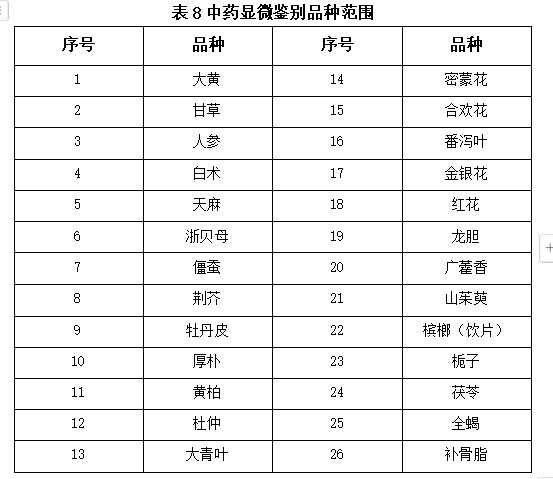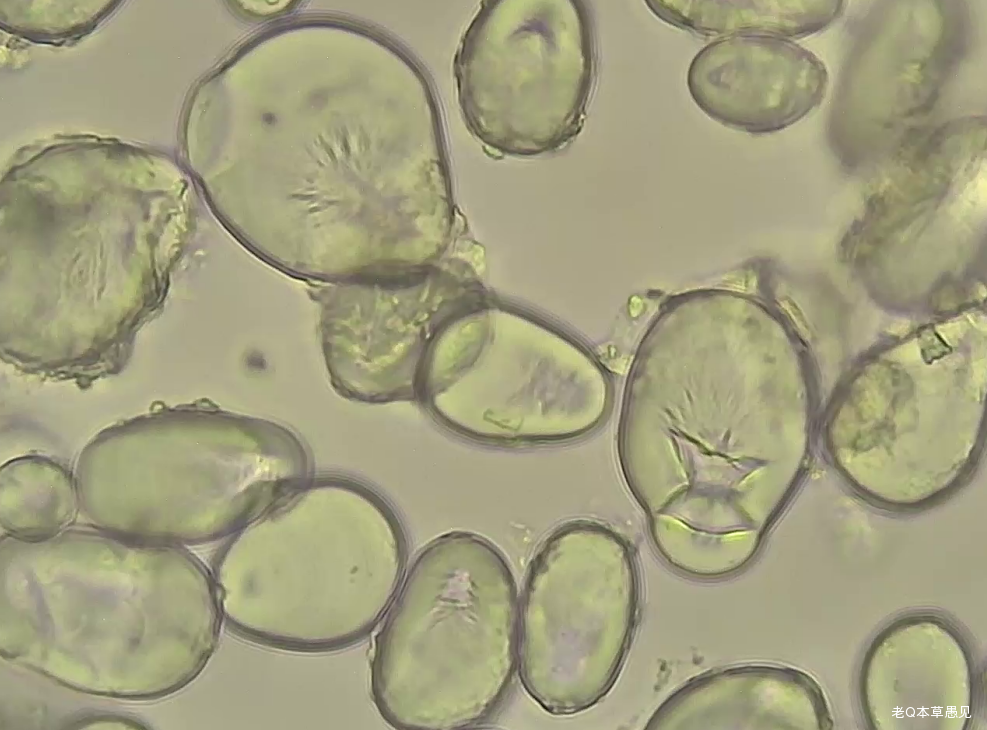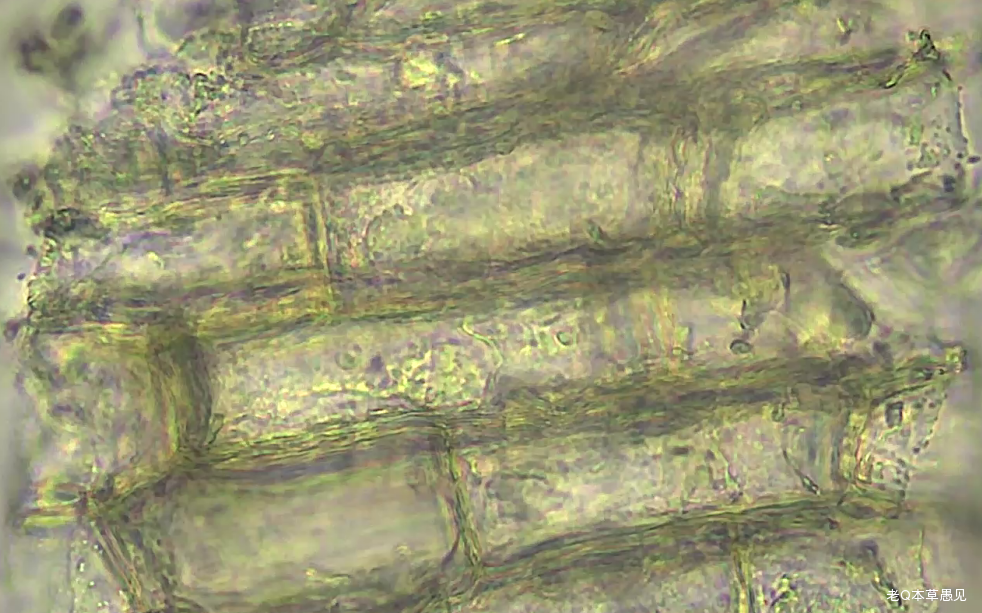
Click the blue text to follow us
Review of the Third National Traditional Chinese Medicine Skills Competition
This competition is divided into four main sections: theory, identification of properties, authenticity and quality assessment of processed products, and microscopic identification.
1. Theory (Weight: 30%)
1. Question types: Multiple choice (1 point/question), single choice (0.5 points/question), 50 questions each; true/false questions 50 questions (0.5 points/question), totaling 150 questions.
2. Scope of questions: Based on the current version of the “Chinese Pharmacopoeia” Part 1, Part 4, and the “Drug Administration Law of the People’s Republic of China”, “Good Manufacturing Practice for Drugs (Appendix: Traditional Chinese Medicine Decoction Pieces)”, “Good Supply Practice for Drugs”, and other relevant laws and regulations related to traditional Chinese medicine. 50% of the questions are drawn from the provided question bank, while the remaining questions are still within the scope of the topic.
3. Actual experience: The legal and regulatory content is relatively limited; many questions are closely related to production practices, such as rough processing; there are also contents related to microscopic identification, etc.; since the question bank is provided, but the exam questions only account for 50% of the question bank, considering the difficulty of multiple-choice questions, overall, the difficulty of the theoretical exam is moderately high, with most scores in the 70-79 range, but to rank in the top few, a score of at least 80 is required; the total score of the first place in the third competition was 94 points (First place has high credibility and can recommend national labor models for May Day);
2. Identification of Properties (Weight: 30%)
1. Identification of properties requires recognizing the correct name and source of the variety (family name, species name, medicinal part, excluding Latin names), for example: Jin Yin Hua (Honeysuckle) – Caprifoliaceae – Lonicera – Flower Bud; for varieties with multiple sources, if the pharmacopoeia has separate descriptions under the property section, the specific source of the sample must be written, for example: Wei Ling Xian (Clematis) – Ranunculaceae – Clematis – Root and Rhizome.
2. A total of 30 samples, time 30 minutes;
3. Overall feeling: There are many varieties, and the time is tight, basically no time to carefully look at the varieties, must recognize them at a glance and quickly write down the name and source; moreover, to increase the difficulty of the national competition, many grass varieties and rare varieties were selected.
4. The identification directory (memory version) includes: Wei Ling Xian (Clematis), Zhi Chuan Wu (Processed Aconite), San Leng (Sparganium), Jiang Ban Xia (Pinellia), Gao Ben (Ligusticum), Zhu Ru (Bamboo Shavings), Ku Di Ding (Bitter Herb), Dong Ling Cao (Winter Ling), Shi Gao (Gypsum), Di Feng Pi (Maple Bark), Chi Shi Zhi (Red Stone Resin), Ling Zhi (Ganoderma), Nan Sha Shen (South Sand Ginseng), Huai Hua (Sophora Flower), Zhong Jie Feng (Dipsacus), Lu Jiao Shuang (Deer Antler), Xi Xin (Asarum), Chou Shi Zi (Mulberry Seed), Da Fu Pi (Trichosanthes), Wei Ling Cai (Potentilla), Xin Yi (Magnolia Flower), Huai Hua (Sophora Flower, write flower bud), Zhi Shi (Bitter Orange), Gua Lou Zi (Trichosanthes Fruit), Xiang Yuan (Citron), Bai Qian (White Peony), Sheng Ma (Cimicifuga), Di Yu (Sanguisorba), Wa Leng Zi (Hibiscus), Hai Zao (Sargassum), Ge Ke (Clam Shell), Mu Zei (Equisetum), Tian Hua Fen (Trichosanthes Root), Gan Sui (Euphorbia), Tu Bei Mu (Fritillaria), Qing Feng Teng (Clematis), Yin Yang Huo (Epimedium), Ting Li Zi (Desmodium).
5. Answer results: Apart from the varieties that were not recognized, there were also mistakes such as writing the character “Ling” wrong in Wei Ling Cai, mistakenly identifying Dong Ling Cao as Pei Lan, so going into the exam room, having strength is one thing, but being able to perform is another.
3. Authenticity and Quality Assessment of Processed Products (Weight: 25%)
This section assesses personal knowledge and experience, as many counterfeit products are harder to find than genuine ones, and studying from books is not effective; one can only accumulate experience through listening, watching, and asking, or by purchasing counterfeit samples for study, but buying samples is not cheap.
1. Authenticity and Quality (memory version): Hai Piao Xiao (large size, should be a counterfeit), Xiao Hui Xiang (the sample provided was cumin), Qiang Huo (Notopterygium), Cang Zhu (the sample provided was Cang Zhu), Nu Zhen Zi (the sample provided was Yadanzi), Chuan Bei Mu (the sample provided was Bai Lu Bei, should be genuine), Hong Jing Tian (Rhodiola), Tu Fu Ling (the sample provided was Banzhu), Yan Hu Suo (the sample provided was Shan Yao Dou), Ma Huang (Ephedra), Mian Ma Guan Zhong (Glycyrrhiza), Hong Shen (the sample provided was Western Ginseng steamed product), Bai Fan (the sample provided was rock candy), Sha Ren (Amomum), Fu Ling (Poria), Xuan Fu Hua (the sample provided was suspected to be Hubei Xuan Fu Hua, a counterfeit), Fu Pen Zi (the sample provided was small, black, very obvious), Shi Hu (Dendrobium), Dang Gui (commonly used European Angelica as counterfeit), Ren Shen (the sample provided was Western Ginseng slices).
2. Quality Assessment of Processed Products: Chao Wang Bu Liu Xing (Fried Vaccaria), Yan Zhi Mu (Salted Anemarrhena), Chao Lai Fu Zi (Fried Radish Seed), Chao Ji Nei Jin (Fried Chicken Inner Gold), Tang Gu Suo Bu (Boiled Bone Fracture Supplement), Yan Xiao Hui Xiang (Salted Cumin), Fu Chao Zhi Ke (Fried Bitter Orange Peel), Ce Bai Tan (Cypress Charcoal), Chao Zhi Zi (Fried Gardenia).
3. Competition experience:
In fact, there were very capable contestants this time, but they did not perform well in authenticity and quality; moreover, the exam has an element of chance, and one should not be too concerned about gains and losses; the quality assessment of processed products is honestly something that ordinary practitioners of traditional Chinese medicine have no opportunity to learn about so many varieties of processed products; thanks to the active organization of the provincial labor union, I was fortunate to learn and record the quality assessment of related varieties under the guidance of teachers, and I feel it has helped me a lot. Please feel free to contact me at the end of the article to share, hoping to help colleagues in need.
4. Microscopic Identification (15%)
1. The directory of microscopic identification includes a total of 26 varieties:

2. The actual competition varieties were: Zhe Bei Mu (Fritillaria), Ren Shen (Ginseng), Fan Xie Ye (Senna).

Zhe Bei Mu starch granules (size of a pigeon egg, oval)

Zhe Bei Mu epidermal cells (thickened in a beaded pattern)

Ren Shen cork cells (wavy curved)

Ren Shen starch granules (small)
3. Competition experience:
The more difficult varieties in the microscopic identification directory are Long Dan (Gentiana), Ren Shen (Ginseng), Guang Huo Xiang (Patchouli). During the competition, the tense and anxious emotions can easily affect performance. Because during the competition, there are two proctors watching your operation, and there are also cameras filming in real-time. The first step in the microscopic identification operation is to prepare the slides; I remember during the provincial selection competition I was very nervous, my hands were shaking severely, and the slides were not completely transparent, affecting subsequent observations under the microscope, which tests psychological quality.
My biggest mistake during the competition was in the microscopic section; during the competition, due to preconceived notions, I thought that the national exam would not choose two varieties that both have starch granules, because I first saw the characteristics of Zhe Bei Mu, so I excluded Ren Shen in the next step, and possibly due to other reasons, such as seeing a rubber-like substance suspected to be Du Zhong, I directly wrote down Du Zhong, while Fan Xie Ye was easy to identify. In fact, during the process of observing the powder, I did see the starch granules, cluster crystals, and resin ducts of Ren Shen, but due to preconceived notions, I only answered two powders, resulting in a significant loss of points in microscopic identification.
[1] For discussions and exchanges on the TCM professional title examination and skills competition, please add my WeChat: 13330150643
END
Thank you for being a part of my world!
 Scan to followme to meet a better self, grow together, and make progress, let’s go!
Scan to followme to meet a better self, grow together, and make progress, let’s go!

